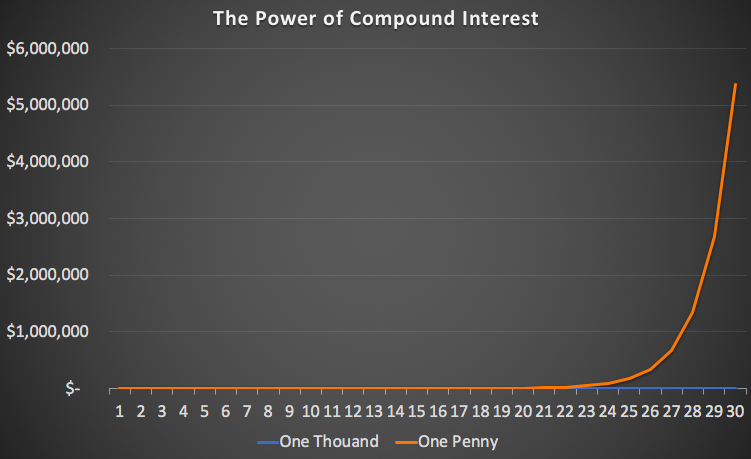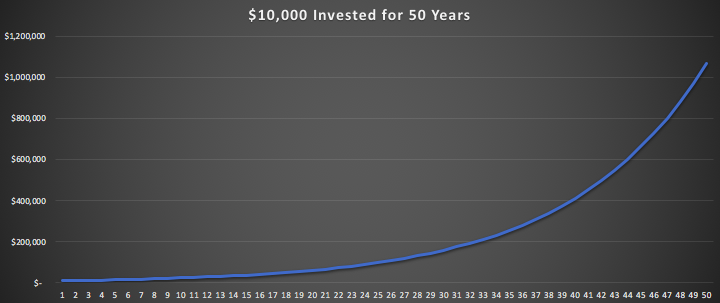Compound interest can be best summarized with this thought experiment. If you had the option of receiving one of the following for a month, which would you take?
- $1,000 each day
- 1 penny that doubles each day
$1,000 each day is $30,000 for the month (let’s hope you aren’t offered this deal in February). But what about that penny? How much could that come out to?
With compound interest, that penny turns into a lot more very quickly.

That penny is worth $5.4 million by day 30, which blows the door off of the $30k you would have earned from the first offer. This is exactly why Albert Einstein said that, “Compound interest is the greatest mathematical discovery of all time.”
Compound Interest & Simple Interest
In our thought experiment, the $1k payment per day is simple interest. This is where you receive a fixed amount of payments over the life of an investment. A bond is a great example of simple interest since you’re paid a fixed amount.
With compound interest, you’re investment continues to grow. That penny became two cents, then four cents, and by day 20 it was over $5k. By constantly building on itself, compound interest has a hockey stick effect on your net worth.
Why Compound Interest is So Powerful
Compound interest will still make a profound effect on your net worth, even if you don’t find an investment that doubles every day like our penny.
Let’s imagine that you invest $10,000 into an S&P 500 ETF over 50 years.

After 50 years, that $10,000 investment grows to over $1 million. The opportunity cost of spending that $10k now versus saving is a lot larger than many realize. The same logic is why over 99% of Warren Buffett’s $73 billion net worth was earned after his 50th birthday.
There are two levers that drive compound interest – compounding frequency and interest rate. The more frequently the money compounds, the faster that will grow.
Same goes for the interest rate. As we saw with the penny example, a little bit can become an incredible amount if the return is high enough.
The Rule of 72
A convenient way to calculate compound interest is with the rule of 72. Divide 72 by the expected interest rate to get a rough idea of when an investment will double.
- 10% – double in 7.2 years
- 6% – double in 12 years
- 2% – double in 36 years
The rule of 72 shows how much of an impact interest rates make on your return.
Compound Interest – The Bottom Line
Compound interest is an incredible force. Even Albert Einstein referred to it as “the greatest mathematical discovery of all time.”
The more frequently the investment compounds, and the higher the interest rate, the more money you’ll have in the future.
Keep this in mind with your hierarchy of savings. And remember, if anybody offers you one thousand dollars per day, or a penny that doubles, take the penny.